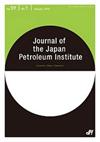基于机器学习和多目标优化的催化剂设计
IF 0.6
4区 工程技术
Q4 ENERGY & FUELS
引用次数: 2
摘要
将机器学习和多目标优化等计算机技术引入到流体催化裂化催化剂的研制中。响应面方法应用于由1000个数据点组成的训练集,这些数据点具有不同的催化剂组成,其中包括各种催化剂组成,原料性质,伪平衡条件,裂化性能测试条件作为输入参数,裂化测试结果作为输出。首先,采用四种近似方法得到了响应面模型,其中径向基函数(RBF)法得到的响应面模型得分最高,平均误差最小,决定系数最高。然后利用多目标遗传算法(MOGA)对RSM进行虚拟实验,对考虑多目标的催化剂设计进行优化;产生更少的底部,更少的焦炭,更多的汽油和更少的天然气。在进行了5000次RSM虚拟实验后,我们发现得到了pareto前沿。最后,从帕累托前端的设计中选出了最优的催化剂设计。结果表明,该催化剂的汽油收率比传统的催化裂化催化剂高2.7%,具有优良的性能。本文章由计算机程序翻译,如有差异,请以英文原文为准。
Catalyst Design by Machine Learning and Multiobjective Optimization
The computer technologies of machine learning and multiobjective optimization were introduced to develop the catalyst for fluid catalytic cracking (FCC). Response surface methodology was applied for a training set consist-ing of 1000 data points with varied catalyst compositions which consist of a variety of catalysts compositions, feedstock properties, pseudo-equilibrium conditions, cracking performance test conditions as input parameters and the cracking test results as outputs. At first, response surface model (RSM) was obtained with four approxima-tion methods, among which the radial basis function (RBF) method was found to give the highest score accurate RSM with the smallest average error and the highest coefficient of determination among them. Then the virtual experiments were carried out with the RSM applied with multiobjective genetic algorithm (MOGA) to optimize the catalyst design considering the multiobjective; to yield less bottoms, less coke, more gasoline and less gas. After 5000 virtual experiments with RSM were carried out, we found that the pareto front was obtained. Finally, the optimum catalyst design was selected from the designs on the pareto front. As a result, the selected catalyst design showed 2.7 % higher gasoline yield and was confirmed to show the excellent performance over conventional FCC catalyst.
求助全文
通过发布文献求助,成功后即可免费获取论文全文。
去求助
来源期刊

Journal of The Japan Petroleum Institute
工程技术-工程:石油
CiteScore
1.70
自引率
10.00%
发文量
29
审稿时长
>12 weeks
期刊介绍:
“Journal of the Japan Petroleum Institute”publishes articles on petroleum exploration, petroleum
refining, petrochemicals and relevant subjects (such as natural gas, coal and so on). Papers published in this journal are
also put out as the electronic journal editions on the web.
Topics may range from fundamentals to applications. The latter may deal with a variety of subjects, such as: case studies in the development of oil fields, design and operational data of industrial processes, performances of commercial products and others
 求助内容:
求助内容: 应助结果提醒方式:
应助结果提醒方式:


